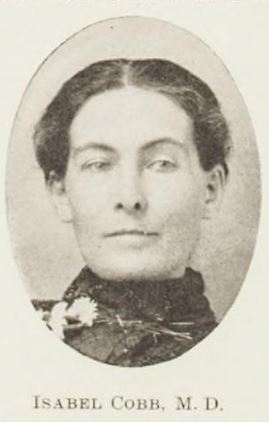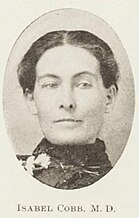
Cherokee County is a county located in the U.S. state of Oklahoma. As of the 2020 census, the population was 47,078. Its county seat is Tahlequah, which is also the capital of the Cherokee Nation.

Park Hill is an unincorporated community and census-designated place (CDP) in southwestern Cherokee County, Oklahoma, United States. The population was 3,909 at the 2010 census. It lies near Tahlequah, east of the junction of U.S. Route 62 and State Highway 82.

Tahlequah is a city in Cherokee County, Oklahoma located at the foothills of the Ozark Mountains. It is part of the Green Country region of Oklahoma and was established as a capital of the 19th-century Cherokee Nation in 1839, as part of the new settlement in Indian Territory after the Cherokee Native Americans were forced west from the American Southeast on the Trail of Tears.

Fort Gibson is a town in Cherokee and Muskogee counties in the U.S. state of Oklahoma. The population was 4,154 at the 2010 census, an increase of 2.5 percent over the figure of 4,054 recorded in 2000. It is the location of Fort Gibson Historical Site and Fort Gibson National Cemetery and is located near the end of the Cherokees' Trail of Tears at Tahlequah.

Northeastern State University (NSU) is a public university with its main campus in Tahlequah, Oklahoma. The university also has two other campuses in Muskogee and Broken Arrow as well as online. Northeastern is the oldest institution of higher learning in the state of Oklahoma as well as one of the oldest institutions of higher learning west of the Mississippi River. Tahlequah is home to the capital of the Cherokee Nation of Oklahoma and about 25 percent of the students at NSU identify themselves as American Indian. The university has many courses focused on Native American linguistics, and offers Cherokee language Education as a major. Cherokee can be studied as a second language, and some classes are taught in Cherokee for first language speakers as well.

The Cherokee Heritage Center is a non-profit historical society and museum campus that seeks to preserve the historical and cultural artifacts, language, and traditional crafts of the Cherokee. The Heritage center also hosts the central genealogy database and genealogy research center for the Cherokee People. The Heritage Center is located on the site of the mid-19th century Cherokee Seminary building in Park Hill, Oklahoma, a suburb of Tahlequah, and was constructed near the old structure. It is a unit of the Cherokee National Historical Society and is sponsored by the Cherokee Nation, the United Keetoowah Band of Cherokee Indians, and other area tribes. The center was originally known as Tsa-La-Gi but is now known as the Cherokee Heritage Center.

Bacone College, formerly Bacone Indian University, is a Private college in Muskogee, Oklahoma. Founded in 1880 as the Indian University by missionary Almon C. Bacone, it was originally affiliated with the mission arm of what is now American Baptist Churches USA. Renamed as Bacone College in the early 20th century, it is the oldest continuously operated institution of higher education in Oklahoma. The liberal arts college has had strong historic ties to several tribal nations, including the Muscogee and Cherokee. The Bacone College Historic District has been on the National Register of Historic Places listings in Muskogee County, Oklahoma since 2014.
Sequoyah High School is a Native American boarding school serving students in grades 7 through 12, who are members of a federally recognized Native American tribe. The school is located in Park Hill, Oklahoma, with a Tahlequah post office address, and is a Bureau of Indian Education (BIE) grant school operated by the Cherokee Nation.

William Wirt Hastings was an American politician and a U.S. Representative from Oklahoma.

The Cherokee National Capitol, now the Cherokee Nation Courthouse, is a historic tribal government building in Tahlequah, Oklahoma. Completed in 1869, it served as the capitol building of the Cherokee Nation from 1869 to 1907, when Oklahoma became a state. It now serves as the site of the tribal supreme court and judicial branch. It was designated a National Historic Landmark in 1961 for its role in the Nation's history.

The Oklahoma State Regents for Higher Education is the agency of the government of Oklahoma that serves as the governing body of the Oklahoma State System of Higher Education, which is the largest provider of higher education in the state of Oklahoma. The State System consists of all institutions of higher education in Oklahoma that are supported by direct legislative appropriations from the Oklahoma Legislature.

The first Cherokee Female Seminary was a boarding school opened by the Cherokee Nation in 1851 in Park Hill, Oklahoma. On Easter Sunday 1887, a fire burned the building, but the head of the school, Florence Wilson, made sure all the girls got out. Two years later, in 1889, the new Cherokee Female Seminary reopened and still stands just north of Tahlequah.
The Cherokee Male Seminary was a tribal college established in 1846 by the Cherokee Nation in Indian Territory. Opening in 1851, it was one of the first institutions of higher learning in the United States to be founded west of the Mississippi River.
Dr. Isabel Keith Baker was a former educator in the U.S. state of Oklahoma. Throughout her 43 years as an educator, Baker taught in several Oklahoma schools, retiring as Professor Emeritus from Northeastern State University in 1994. Baker served on the Oklahoma State University A&M Board of Regents from 1991 until 1999. She played a major role in the renovation of Willard Hall, the home of OSU's College of Education. During her career and throughout her life, Baker has been recognized as a champion of gender equity. In the 1980s, Baker ran for Congress and was defeated by Republican candidate, Tom Coburn.

Jennie Ross Cobb is the first known Native American woman photographer in the United States. She began taking pictures of her Cherokee community in the late 19th century. The Oklahoma Historical Society used her photos of the Murrell Home to restore that building, which is now a museum. Trained as a teacher, Cobb worked as a florist in Texas before returning to Oklahoma to spearhead the restoration of the Murrell Home.
Mary Adair is a Cherokee Nation educator and painter based in Oklahoma.

Isabel "Belle" Cobb was a Cherokee physician and educator best known for being the first woman physician in Indian Territory.
Eliza Missouri Bushyhead Alberty was a Cherokee businesswoman, school administrator and educator.
Ellen Rebecca Whitmore was the first principal teacher at the Cherokee Female Seminary in modern-day Oklahoma and later served as a missionary in Hawaii.
















